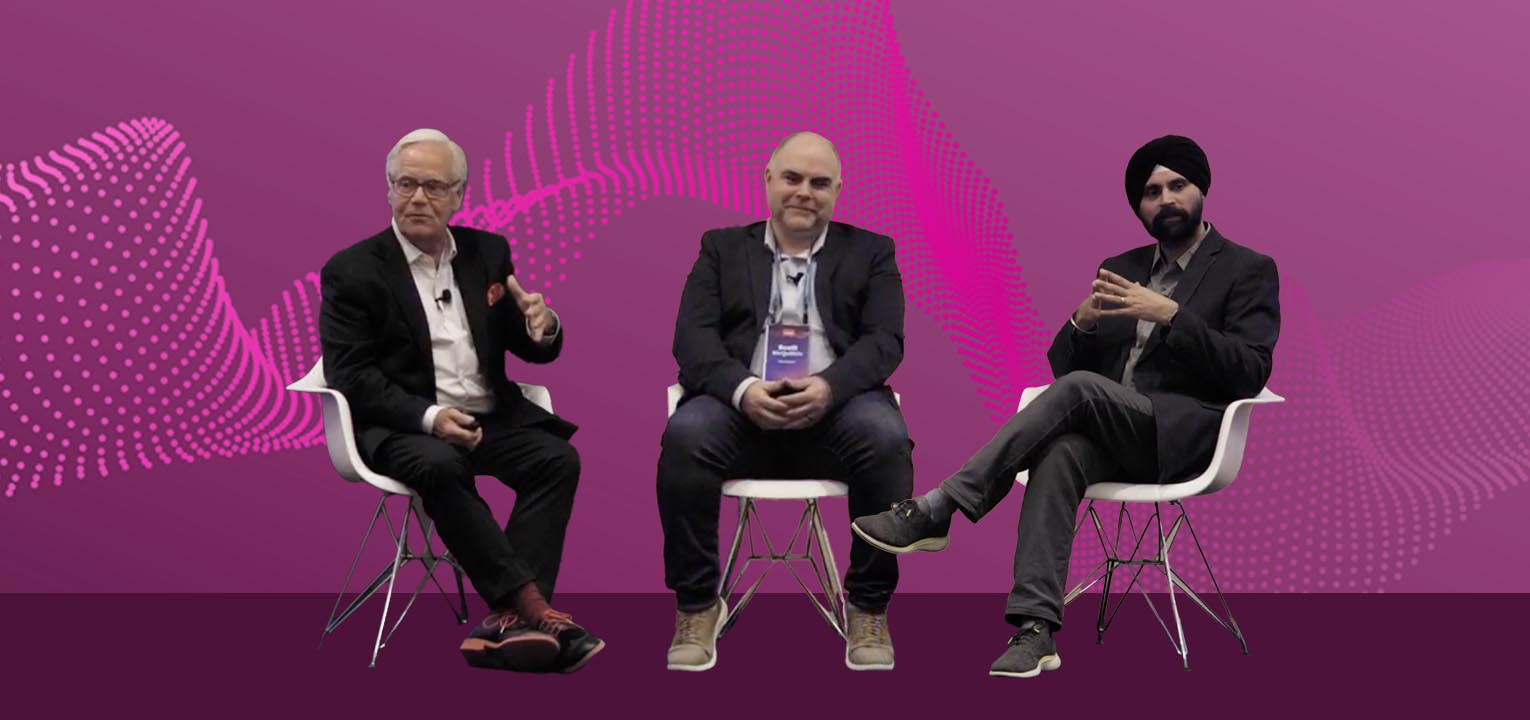December 21, 2021
Top 22 Digital Banking Trends for 2022 (part 2): Rise of the “Netflix Effect” for Banking, With Personalization and Advice

In the first part of our top 22 trends for digital banking in 2022 – the future of digital banking, we explored how to drive business impact while upholding their social contract. But how can banks do more to deepen their customer relationships, increase share of wallet, and improve targeting of relevant products to really generate better sales results? Let’s see some examples of digital banking trends for 2022, focused on “the Netflix Effect” in digital banking.
Customers are expecting a higher level of convenience, helpful customer experience, and personalized recommendations from the mobile apps and streaming services that they enjoy using in everyday life. Banks need to stay on top of this trend and provide this same level of personalized, effortless experience. By adopting advanced money management platform capabilities and data-driven personalization, by learning more about what their customers need based on existing transaction data, financial institutions can provide a new level of personal interaction.
All these trends for 2022 are related to the broader goal of helping financial institutions deliver more relevant recommendations, product-based advice, and highly targeted product offers. “The Netflix Effect” in digital banking will support customers’ financial wellness while enhancing business performance.
Let’s look at the second half of our top 22 trends for 2022 in digital banking:
12. Rise of “The Netflix Effect” for Banking
In 2022, we’re going to see the fintech and banking world adopt the “Netflix effect.” Modern consumers want an experience where banks and fintechs can think on their behalf and, like Netflix, provide automatic recommendations based on the individual. Just as Netflix learns more about what customers want to watch based on their everyday viewing, fintechs can help banks learn more about their customers based on everyday transaction data and spending patterns. When banks know customers better, they can help customers do better in their financial lives.
The future of banking will be more about helpful interactions between the bank and customer, where the bank proactively recommends the right product, financial advice, or personalized financial services based on the customer’s needs. Banks can go deeper into their customer relationships and identify occasions to recommend relevant services to the customer, such as a home improvement loan or an automated savings program, to help people reach their financial goals.
Especially with the expansion of open banking and open finance, banks are entering into a new era of collaborative ecosystems, where they can help customers find the right product and serve as a trusted advisor. Although banks will be competing against a wider range of competitors, including fintechs and non-bank companies, banks have inherent advantages: trust-based relationships built on their brand promises and branch networks, and their customer transaction data.
As McKinsey’s Global Banking Annual Review says:
“It is not too far-fetched to imagine a day when banks will offer a range of services, reach a vastly larger customer base, and succeed at their digital rivals’ game. To do so, banks will have to fully deploy the vast digital tool kit that is now available—something most have failed to do thus far. Harnessing the new powers of data-driven marketing, a digital workbench for sellers, robotic process automation, the cloud, application programming interfaces and apps, and all the other tools now available is an essential step for banks.”
Creating “the Netflix Effect” for banking will be built on banks’ most valuable asset: their customer transaction data. Advanced money management capabilities are becoming available to help banks achieve data-driven personalization in their customer engagement and product targeting.
13. Data-driven Personalization for Personal Interactions
We believe that basic personalized insights will become table stakes for financial institutions in the U.S. market by the end of 2023. If personalization is not already in your bank’s technology budget for 2022, it will be for 2023. Customers are starting to expect a higher level of personal interactions from their bank, and data-driven personalization can make this more efficient.
Survey data from EPAM found that 34% of consumers want more personal interaction with their banks and credit unions; not personalized digital self-service, but actual interactions with another person who can talk with them about their finances.
14. Connected Channels for Unified Advice and Better Sales Tactics
By using the power of data-driven personalization, banks can create connected channels, where a customer need gets identified from transaction data, the customer gets a relevant product recommendation via digital channels, and then the customer gets invited to talk to a banker at the branch. This helps the bank offer unified advice to the customer.
For example, let’s say a bank has a customer who is spending more money than usual at home improvement stores. The customer also has a high level of branch visits; they often visit the branch for everyday banking and deposits. With data-driven personalization and connected channels, the bank can:
- Show this customer personalized insights about home improvement (“We noticed you spent $1,000 on home improvement last month…”)
- Recommend a relevant financial solution for the customer’s needs (such as a home improvement loan or home equity line of credit)
- Encourage the customer to schedule an appointment with a banker
- Deliver real-time, personalized intelligence to the banker based on the customer’s financial data, helping the branch staff be well-informed and ready to have a conversation with that customer
All of this is focused on delivering the right advice and relevant recommendations to the customer at the right moment in the customer’s financial life. Data-driven personalization will help banks have more helpful personal interactions to provide unified advice to customers, boosting banker productivity and driving higher customer lifetime value.
Want to see more details about how the connected channels concept works in real-life scenarios? Check out this recent article in The Financial Brand from Personetics President of Americas, Jody Bhagat: “How Financial Institutions Can Stop Chasing Their Digital Tails.”
15. Bigger Growth (and Intense Competition) for Fintechs
2021 has been a record-breaking year for fintech growth. Globally, in the last three months, 33% of all total new unicorns have been fintech-focused. We’ve also seen a huge number of fintech IPOs as well as influential M&As. The growth opportunity for fintechs is greater than ever but this is making market competition more intense; the challenge for fintechs in 2022 will be standing out and prioritizing customers.
16. More Growth of “Fintechs for Good”
At Personetics, we believe that fintech should make the world a better place. We are focused everyday on how to help banks improve the financial condition of their customers and help people get access to relevant, personalized advice and helpful financial solutions. In 2021, we saw big growth in the area of “green fintechs” or “fintechs for good.” In 2022, we expect to see many more solutions that prioritize financial wellbeing and enable people to make more sustainable choices with their money, for example by showing the carbon footprint of their spending.
Fintech has a huge opportunity to be a force for good in the world, by empowering people to understand their everyday spending, create a financial safety net of emergency savings, get access to helpful financial products at the right time, and make better long-term financial decisions to invest for the future. At every stage of people’s financial lives, for every financial challenge, fintech can be part of creating win-win solutions.
17. Removing Cognitive Load and Busy Work from Everyday Banking
People are busier than ever and often feeling overburdened by the digital clutter and cognitive load of managing the details of various screens, apps, emails, messages, and alerts that they deal with in everyday life. Banks and fintechs are increasingly seeking to shift the burden away from the customer with technology that automates the “busy work” of managing personal finances. By relieving customers of their cognitive load and creating a more frictionless experience, banks can also use helpful “nudges” to guide customers to improve their overall financial wellbeing.
For example, when customers are offered an easy option to sign up for automated savings programs, they are more likely to save more money. When customers are given an easy online signup process to apply for a loan, they’re more likely to apply and get the right financial product for their needs. Removing busy work helps connect customers with the right product, more quickly, at every stage of the customer journey.
18. Hyper-Personalized Banking Experiences for Consumers
In 2022, banks are going to be able to use the power of Open Banking, Open Finance, and data-driven personalization to create hyper-personalized experiences for their customers. Here are a few examples of what hyper-personalization looks like:
- Identifying a customer who needs a debt consolidation loan, based on the customer’s external revolving credit accounts
- Noticing that a customer is spending more money than usual on home improvement, and recommending a home equity line of credit or home improvement loan for that specific need
- Working with wealth managers/financial advisors to find opportunities to help customers save and invest more money each month for retirement
Hyper-personalization is about helping banks create a holistic view of the customer’s financial life and connect the channels of the bank to recommend the right product for that customer’s specific needs, with real-time data, based on that customer’s specific circumstances. This development doesn’t hinge on a single technology but will result from a combination of technologies that work together to use data to understand customers on a deeper level.
Various aspects of these hyper-personalization capabilities have been developing over the past few years, but now it is all coming together with strong momentum to become an everyday reality. We’re finally at an inflection point where there is a willingness from customers, regulators and banks to provide a hyper-personalized experience for consumers.
19. Consumer-Style Digital Banking for SMBs
Although recent years have seen widespread adoption of innovative financial solutions and digital banking apps for consumers, small-to-medium-sized businesses (SMBs) have often not benefited from the same level of innovation in SMB banking. In 2022, that will change for the better.
SMB digital banking is going to see rapid innovation and hyper-personalization from banks and fintechs. SMB owners will start to see the same kinds of “Netflix Effect” recommendations and better digital banking app experiences that they’re accustomed to for their personal finances but designed for the unique needs of small business banking customers.
Small business owners are already eager adopters of digital services to help run their businesses, such as digital payments and accounting tools. Embedded finance for SMBs – bringing banking services to the digital platforms that small business owners already use in their everyday work lives – could present new opportunities for banks. Recent research from Accenture found that 85% of SMEs are already using digital services in their daily operations, 41% of SMEs would be interested in using banking services offered by a digital service provider, and that embedded finance could expand the SMB banking market by $92 billion.
Fintechs and banks have the tools and data sources to analyze small business owners’ everyday financial activity and help them manage their business more effectively. SMB digital banking in 2022 will see wider adoption of day-to-day cashflow monitoring and management tools, as well as predictive forecasts and insights to help small businesses recover from low balance issues, cashflow shortfalls, slow receivables, and more.
Business owners have a lot on their mind and tend to think about their business operations in terms of workflows: order-to-cash, procure-to-pay, record and report. If fintechs and banks can think on behalf of businesses in this way, by designing their digital banking experiences to suit the workflow mindset of SMB banking customers, it will benefit both parties. In the future of SMB digital banking, banks will become business partners to their customers.
Personetics is already partnering with multiple banks to help SMB customers connect their bank accounts to external accounting software and integrate this accounting data to get a better view of the SMB’s financial performance. By seeing their customer’s business cash flow, banks can help their SMB customers with more proactive advice and relevant recommendations, such as invoice finance offers or business lines of credit.
Personetics Act for Small Business also helps banks support their customers with automated savings programs to build financial resilience, such as setting up specific savings goals, saving for taxes, or reducing debt. By integrating with Salesforce and Microsoft Dynamics, Personetics helps bankers, advisors, and call center agents deliver more relevant, personalized advice to SMB customers, helping enhance the bank’s productivity while deepening customer relationships.
To learn more about the future of SMB digital banking, read our recent guest blog post from our partner Celent, or watch our webinar on How to Outperform in SMB Digital Banking.
20. Creating “Financial Peace” with Digital Banking Technology
Coping with financial stress is a burden we all carry, and consumers are often frustrated with the decision-making and administrative workload of managing their finances. Even for people who have enough money in the bank, who do not have to worry about paying their bills, there is often a feeling of stress and uncertainty involved with receiving bank statements, or checking their bank balance, or worrying about whether they are saving enough money. Dontá L. Wilson, chief digital and client experience officer at Personetics partner bank Truist Financial, and American Banker’s Digital Banker of the Year 2021, calls this “financial peace.”
In 2022, more banks and fintechs will adopt a stronger stance on how to help their customers achieve financial peace. Digital banking technology will enable fintechs and banks to take a proactive role in monitoring their customers’ account balances, reaching out with financial recommendations, providing real-time financial advice and automating time-draining tasks. Managing your finances will become significantly easier, helping people spend less time thinking about money and more time living life.
21. Connecting People with Better Financial Advice
It is hard for most middle-class consumers to get access to helpful financial advice. Bank customers often don’t know how to explain what they want to do with their money, they often don’t know which financial goals are feasible for them, they might not understand which products or services are the right fit for their needs, and many don’t have the opportunity to meet with a financial advisor regularly.
This is where digital banking technology can fill the gap and connect many more consumers with relevant, helpful financial advice. In 2022, more banks will adopt data-driven personalization technology to help anticipate the financial needs of customers, assist with debt management, and help them achieve their finance goals.
Instead of just being a place to keep your money or a company that signs you up for a new bank account, credit card, or loan, banks can become trusted advisors. Data-driven personalization helps banks proactively look out for their customers’ financial needs, and recommend personalized advice based on each customer’s unique situation.
22. Democratizing Wealth Management
In 2022, data-driven personalization and digital banking technology will also help democratize wealth management by helping people with their investments and trading. There are currently millions of underserved customers who don’t have the means to access their own financial advisor. These customers will benefit from a hybrid model where data-driven personalization helps the financial institution’s relationship managers to make better-informed decisions and open up wealth management to a larger audience, just like Robinhood has expanded retail investing.
The end result: more customers getting access to helpful, personalized investment advice; more customers feeling confident about investing; more customers investing regularly and following a long-term plan for financial success.
Learn more about 2022 trends in wealth management from Personetics President of Americas, Jody Bhagat, during his recent presentation to the SEC Asset Management Advisory Committee (AMAC).
Digital banking in 2022 is not just about new technology or new digital features, it’s about rethinking the way banks engage and interact with their customers in all aspects of their operations. There are significant opportunities for banks in 2022 to use digital tools and data-driven personalization to know their customers, advise their customers, and help their customers achieve financial wellness.
The foundation for digital transformation in 2022 is something that banks already have: customer transaction data. By building upon their customer data, analyzing data, and gaining insights from this data, banks can achieve data-driven personalization that puts the customer at the center of every interaction. Beyond selling products, banks can become trusted advisors who know how to make the right recommendation at the right time.
In the same way that Netflix has helped people connect with “bingeworthy” episodes that are recommended to each person based on their viewing history, banks can help create stronger engagement with customers by recommending relevant insights and helpful products. The future of digital banking in 2022 will be more effortless for the customer and more value-creating for banks. By making banking more personalized, by staying at the center of the customer’s financial life, by integrating data via open finance and partnering with other companies to create a more collaborative ecosystem of financial services, banks can be more profitable in 2022 and beyond.
Ready to discuss your financial institution’s digital banking vision for 2022? Talk to Personetics today.
Want to explore how your bank can harness the power of AI to engage and serve customers? Request a demo now
Latest Posts

The AI Implementation Reality Check

Why Asia Pacific Pacific Banks Must Lean into Cognitive Banking: A Conversation with Dr. Dennis Khoo

Explore our Spring Release Highlights – From Integrated Marketing Offers, to Custom Trackers, and AI Innovation

Dorel Blitz
VP Strategy & Business Development
Dorel Blitz brings over 13 years of experience in global strategy and business development in the financial services industry. Dorel joins Personetics from KPMG, where he headed the Fintech sector at KPMG Israel and a member of the global Fintech practice. In this role, Dorel was instrumental in establishing KPMG’s collaborative relationships with global financial institutions and leading Fintech companies including Personetics. He also acted as a subject matter expert and led advisory projects involving digital transformation strategies with financial services organizations. Prior to joining KPMG, Dorel led the Innovation & Fintech practice at Bank Leumi, and earlier in his career, he headed the banking & finance division at global research firm Adkit.









